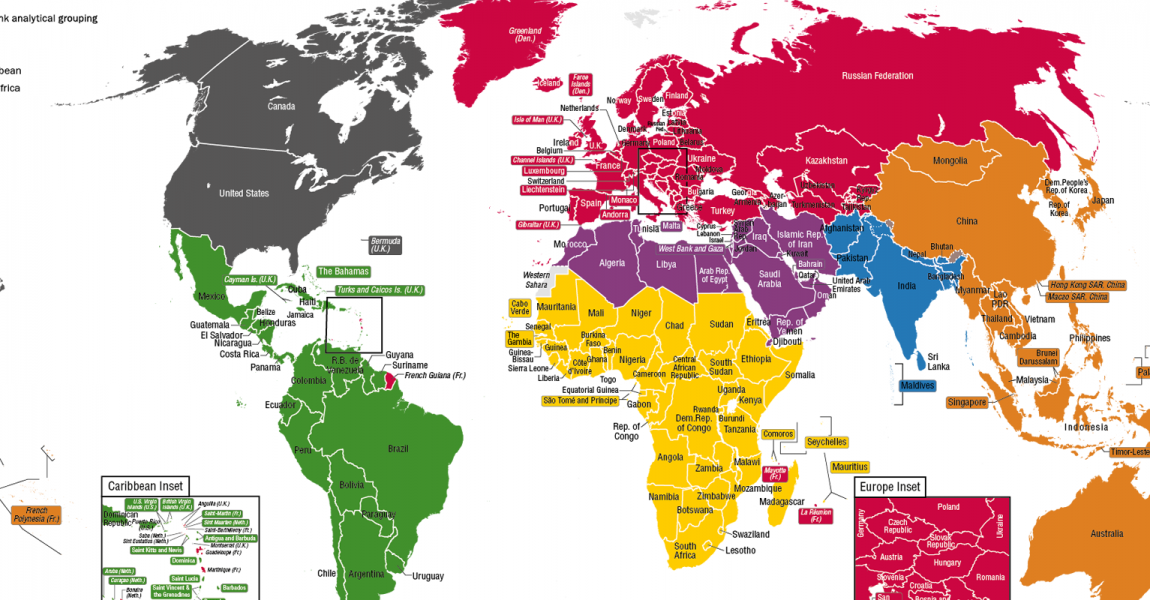
Latin American countries had seen the worst economic performance in 2015 following the onset of the recession. It is understood that the region fared far worse than it has ever done in the past ten years.

Economic experts around the globe attributed the decline in economic growth in most Latin American countries to a drop in commodity prices, poor governance and lack of growth oriented economic programs. Even Venezuela which had been doing quite well by the summit of 2014, also failed to impress both during the onset of 2015 and towards the end of 2016. Generally, the year 2016 was far worse than what most economic experts had expected. Here is a general overview of what could have led to the deteriorated economic growth in the Latin American region.
Understanding the situation on the ground
According to information on the economic growth pattern of the region for the year 2016, it is clear that the region witnessed a much worse economic downturn than most economic experts had expected. Even though the region’s economic growth had literally stagnated during the whole of 2015, the year 2016 still promised better things. Economic experts within the region had a better outlook than what they witnessed in 2016.
Expert sources show that the region’s economic growth contracted by around 0.7 %. This is by far worse than what was forecasted earlier in the year.As things stand, countries like Brazil and Argentina are still in the deep waters of the 2015 economic recession.
Brazil in particular, is experiencing an economic situation which is far worse than what it witnessed in 2016 as the country’s currency continues to depreciate along with low investor confidence and consumer spending.
In as far GDP growth is concerned, the region fared quite badly. Economic data shows that the region fared the worst in this area after its GDP declined by over 0.2 %. Compared to other regions in the world, this was the worst performance of the year 2016. Even sub Sahara Africa recorded a much better GDP (about 4 %; this was the 3rd best GDP growth in the world) for the year 2016 than Latin America. This is the current situation on the ground. The three major countries in the region are all fighting to lift themselves out of the current mess using various measures.

Poor past economic policies
A number of economic experts believe that the region’s failure to emerge out of the 2015 recession was largely caused by poor economic policies. Major economies in the region including Brazil, Argentina and Venezuela had been found to be culprits of poor economic policies which had been structured and implemented by previous regimes. The effects of such past policies had resurfaced and began to haunt the economies of these great Latin American nations.
To be more precise, experts strongly believe that the recession which was witnessed by the region was largely due to the past economic policies especially those which were implemented during the post 2008 global recession era. Argentina is the major culprit in this regard having just ushered in a new government last year following the expiration of the former regime’s tenure. The new government took over both macroeconomic and microeconomic imbalances which had been left behind by the previous regime.
For example, Brazil and Argentina both failed to deal with the depreciation of their currencies against the US dollar. Like most Latin American countries, they chose to depend on tightening their fiscal policies. This was also replicated by Venezuela which not only tightened its fiscal policies, but also went on to stiffen its monetary policies. All the countries in the region which followed suit gradually saw a sharp drop in their economic growth rates.
What lies ahead?
This is the question that everyone is asking. The contracted economic growth that has characterized the region is not new to the rest of the world. But, the right measures have to be put in place to dismiss it before things become worse. Argentina and Brazil both share the same economic woes, even though Brazil appears to be in a much worse situation. Venezuela’s growth has equally stalled although recent measures appear to be yielding the government’s desired results.